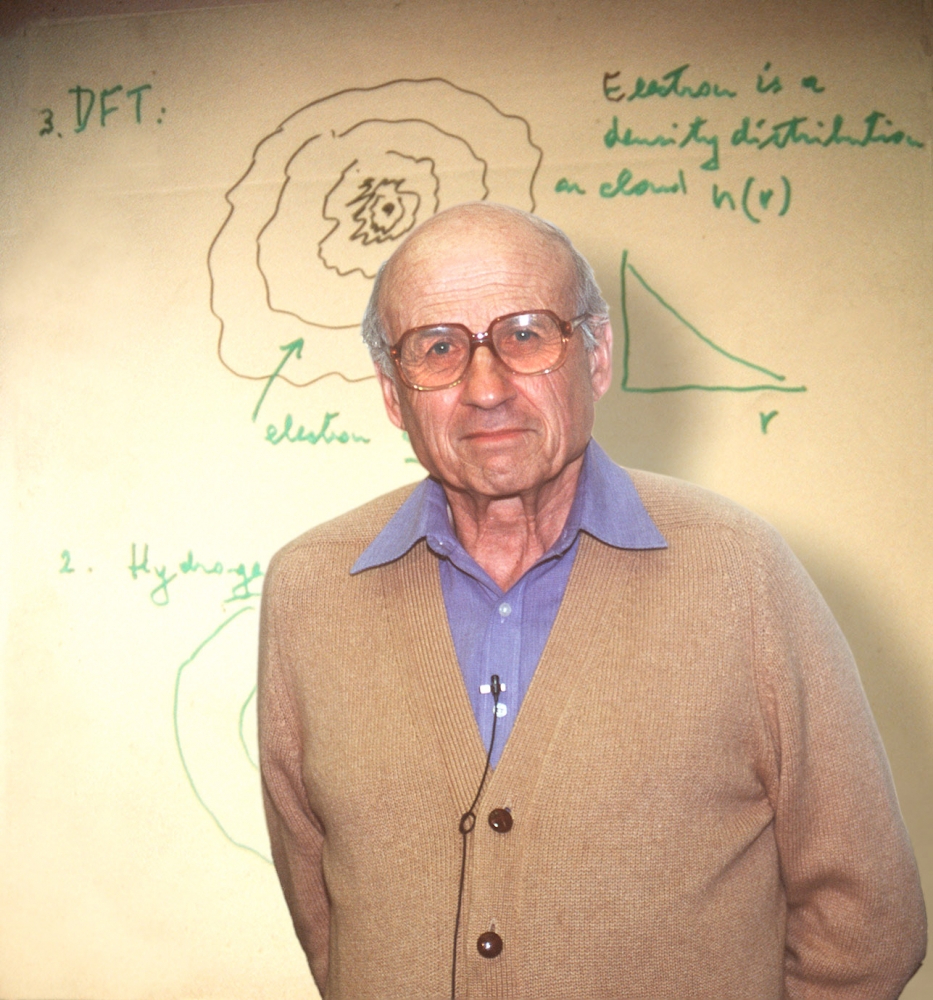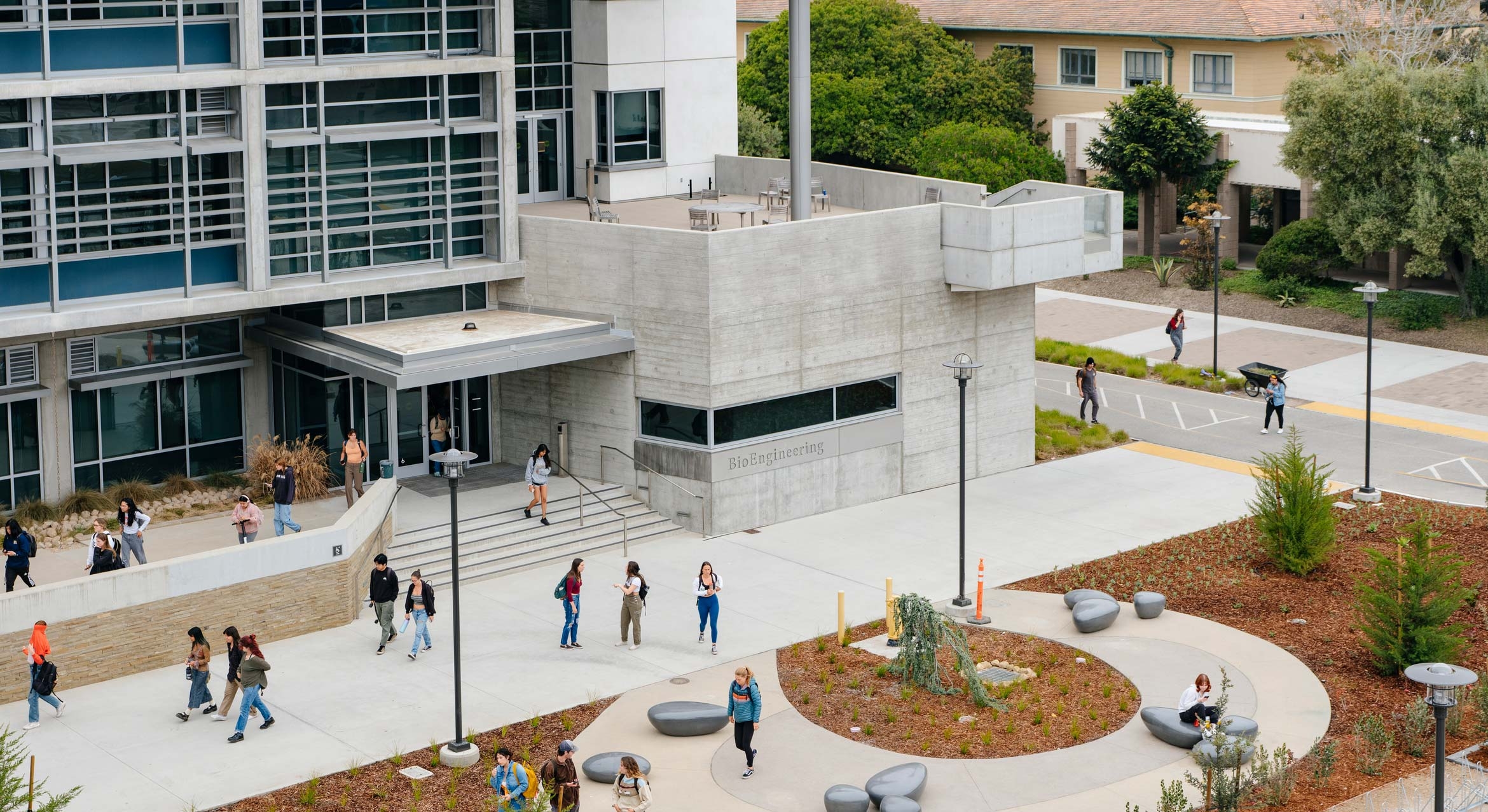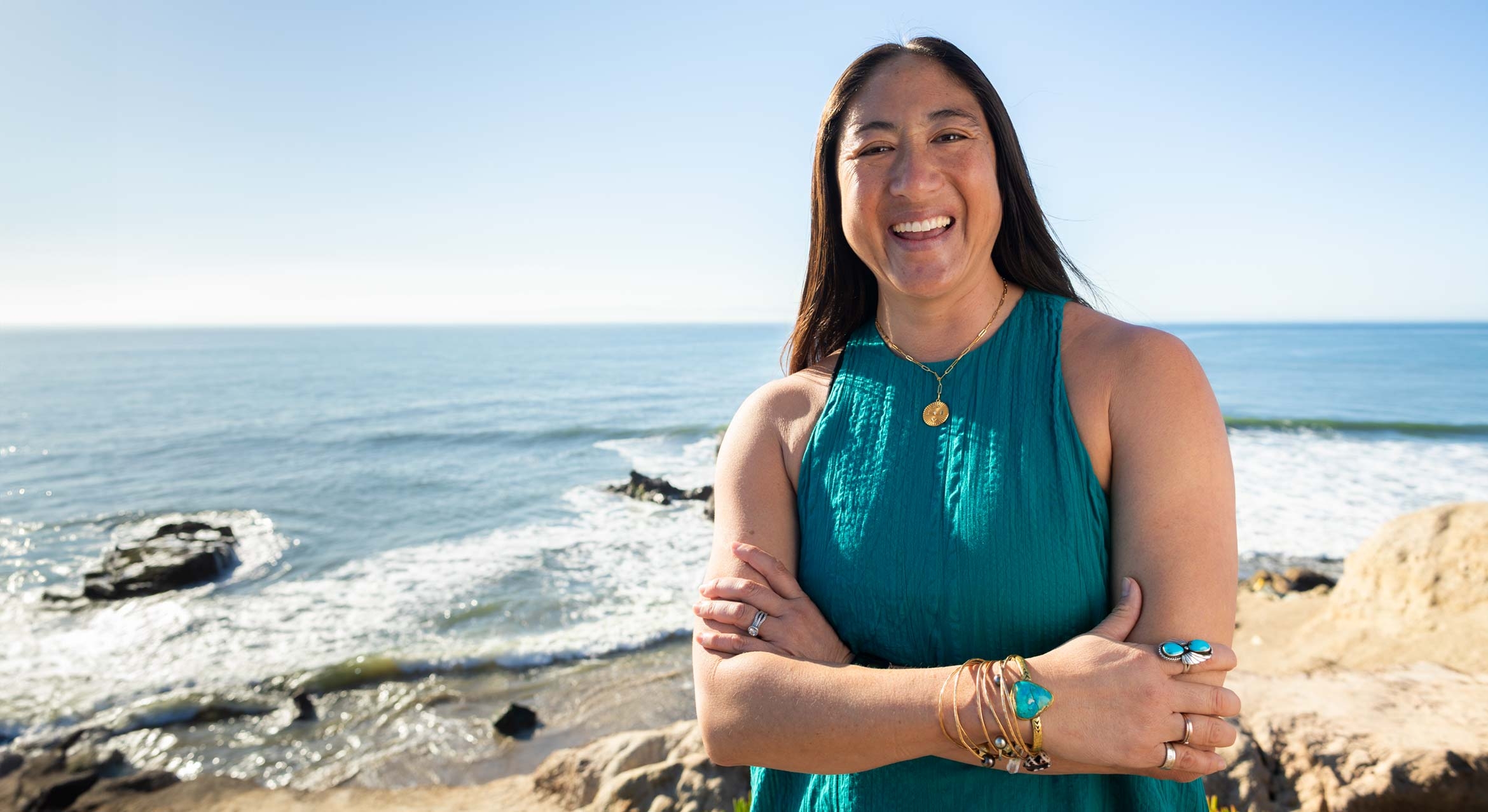In Memoriam: Walter Kohn

Walter Kohn saw the very worst the world has to offer — and he also saw the very best.
Born in Vienna in 1923, the Nobel Prize-winning scientist was a teenager when World War II began and terrifying — and seemingly unimaginable — events unfolded around his family. Desperate to get their son and daughter to safety, Kohn’s parents sent them out of Austria, rescued from the Nazi regime in one of the last Kindertransport missions that brought children out of Nazi Germany, Austria and other German-occupied territories and placed them with surrogate families in England.
The effort saved young Walter and Minna, along with some 10,000 other predominately Jewish children, most of whom were the only members of their families to survive the Holocaust. As to Kohn’s parents, Gittel and Salomon, they were killed at Auschwitz.
In a 2014 interview, recalling his childhood in Austria, his rescue and the families in England and, later, Canada, that embraced him and encouraged and supported his studies, Kohn spoke of the lasting impact on his life of “the acts of good people.”
Perhaps then, in a philosophical sense, that kindertransport helped take Kohn, decades later, all the way to Copenhagen, where in 1998 he was awarded the Nobel Prize for Chemistry for his development of the density functional theory. It was the highlight of his long and illustrious career as a scientist.
Kohn, the first of six Nobel laureates at UC Santa Barbara since 1998 and founding director of the Kavli Institute for Theoretical Physics (KITP), died April 19.
“Walter’s friendship has been a gift to me personally as well as to our entire campus community,” said Chancellor Henry T. Yang. “Though he is no longer with us, he has left a living and lasting legacy through his inspiration and impact, which is beyond anything I could adequately put into words.
“Our campus is devastated by the sad news of Professor Kohn’s passing, and our hearts go out to his beloved wife, Mara, and their family,” Yang continued. “Walter was an internationally regarded colleague, scholar, mentor and role model and proudly, the first of six Nobel Laureates at UC Santa Barbara since 1998. His development of the density functional theory, for which he received the Nobel Prize in Chemistry, revolutionized scientists’ approach to the electronic structure of atoms, molecules and solid materials in physics, chemistry and materials science.”
Also among UCSB’s six Nobel laureates is David Gross, who received the prize in physics in 2004. A permanent member and former director of the KITP, Gross holds the Frederick W. Gluck Chair in Theoretical Phyics. He described Kohn as “a great scientist, a compassionate humanitarian and an inspired scientific statesman.
“As director of the KITP I learned to appreciate the genius who created the essential features of this institution that he first directed and guided at its very beginning,” Gross said. “Although we will miss him greatly his spirit lives on at the KITP.”
The institute brings together leading scientists from throughout the world to work on major problems in theoretical physics and related fields. Now situated in a building, Kohn Hall, that bears his name, the Institute for Theoretical Physics (ITP), as it was then known, was essentially launched by Kohn; he first came to UCSB in 1979 to serve as its inaugural director. Under Kohn’s leadership, the ITP quickly developed into one of the leading research centers in physics, and has since been widely emulated internationally.
“Walter led the ITP to a strong start,” recalled Jim Langer, a permanent member and former director of the institute, who first met Kohn in 1954. “[It] quickly became a destination of choice for both program participants and postdocs. Its activities had a multidisciplinary flavor from the beginning. There were research programs in neural networks and nonequilibrium dynamics as well as activities in particle and nuclear physics, astrophysics and condensed matter.
“In a few years, the institute became a major asset for the university as a whole when recruiting new faculty in physics and in engineering and related disciplines,” he continued. “The rise of UCSB as an internationally prominent research university was due in large part to the growing reputation of the ITP. Walter set a tone of modest, warm and thoughtful leadership for the ITP, especially in guiding talented young scientists at the beginnings of their careers.”
Langer himself was once a young scientist who drew inspiration from Kohn. The two first met in 1954 at Carnegie Tech (now Carnegie Mellon), where Langer was then an undergraduate student and Kohn was a faculty member and emerging leader in solid-state physics. They would eventually work together closely, when Langer joined UCSB and became a permanent ITP member and, later, its director.
Said another former KITP director and founding member James Hartle, a research professor and professor emeritus of physics at UCSB: “It is said that a great man leaves behind more opportunities than he finds. That is certainly true for Walter and the Kavli Institute for Theoretical Physics. As founding director he shaped the world-class institution that we have today. We will miss him as a friend and as a colleague. We will remember him for the opportunities that he created here, and for his wise guidance and energy in realizing them.”
Beyond his research, Kohn was deeply engaged in matters spiritual and societal. In 2001, he was the inaugural speaker for the Templeton Research Lectures on Science, Religion, and the Human Experience, sponsored by the Templeton Foundation and hosted by UCSB. He spoke about the interaction between science and religion, and about how science and technology pose both great promises and great threats to mankind in this global age.
“Professor Kohn was a mentor and role model for colleagues and students alike,” noted Yang. “Many have been inspired by his incredible life story and his work to promote tolerance and world peace. The tremendous impact of his life and work are beyond anything I can describe. As he put it, ‘Physics isn’t what I do; it is what I am.’ ”
As Kohn said in that 2014 interview, “A lot of people feel — and we’re talking about the Holocaust so I’ll use it to exemplify — this imaginary person is asked, ‘And what did you do during the Holocaust?’ and the normal answer is, ‘Well, there just wasn’t anything I could do as an individual.
“And yes, of course it’s true in a practical sense,” he continued. “But you can do something. It may not be effective when you do it, but it can affect the future. Don’t take the easy route and say, ‘It’s just me against some huge thing.’
“You have to find the way — not huge — that you can contribute to prevent future catastrophes,” he concluded. “Since I’m kind of a practical person, I want to see if there is something that I can do that is going to reduce the likelihood of that horror and magnitude in the future. And I think everybody can contribute to this in some way.”
A public funeral service will take place Tuesday, April 26, at 2 p.m. at Congregation B’nai B’rith, 1000 San Antonio Creek Road. A campus memorial will be held at a later date to celebrate Kohn's life and to pay tribute to the remarkable depth and breadth of his contributions to the university, the community, and the world.



